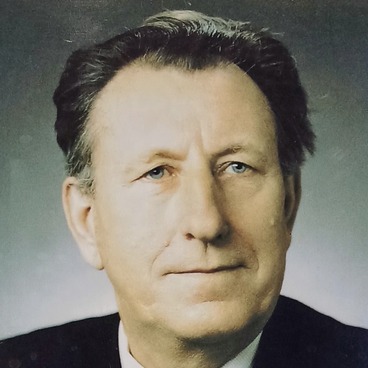Tsiolkovsky museum purchased the chair for their collection in 1970 from Anastasia Kopashilina, a resident of the village of Izhevskoye, who was 90 years old. According to her, she remembered this chair from early childhood, and even then it wasn’t new. Upon admission to the museum, the chair was lined with red velvet, which got badly worn out. For the museum’s new exposition, which opened in 1977, the chair was renovated, covered with varnish and new fabric. The forelegs and the back of the chair are carved, covered with black varnish. The square seat and the back are soft, covered with black cloth with blue patterns.
County forester Edward Tsiolkovsky was transferred to Spassky County in the summer of 1849. He visited Izhevskoye and decided to settle there - in a large trading village with a well-developed cooperage trade. In terms of population, Izhevskoye ranked fourth in the governorate after such cities as RyazAn, Kasimov and SkOpin. It had a population of about 8,000, three parish churches, many shops, public houses, tea houses and coaching inns.
The Tsiolkovsky family did not have their own house in Izhevskoye, they rented rooms here. From 1849 to 1854, the family lived in the house of merchant Mikhailov on Krasnaya Street. From 1854 to 1857, the founder of theoretical cosmonautics, Konstantin Tsiolkovsky, was born in a house on Pol’naya Street. The house was built at the beginning of the 19th century, before the revolution it was known as the house of the estate manager of landowner Demidov, the owner of the village. According to local historians, in the middle of the 19th century this house first housed a post office, and later it was rented out.
The chair is part of the exhibition of the museum, which tells about the life of the Tsiolkovsky family in Izhevskoye. Together with other objects of the time, he helps represent the furnishings in the house of the Tsiolkovsky family. The exhibit also features a desk and a display and storage assembly decorated with carving, as well as an antique musical instrument, a harmonium. In a rectangular wooden body at the top, under the opening lid there are: 29 white and 20 black keys. There are two foot pedals at the bottom, pumping air for sound.
County forester Edward Tsiolkovsky was transferred to Spassky County in the summer of 1849. He visited Izhevskoye and decided to settle there - in a large trading village with a well-developed cooperage trade. In terms of population, Izhevskoye ranked fourth in the governorate after such cities as RyazAn, Kasimov and SkOpin. It had a population of about 8,000, three parish churches, many shops, public houses, tea houses and coaching inns.
The Tsiolkovsky family did not have their own house in Izhevskoye, they rented rooms here. From 1849 to 1854, the family lived in the house of merchant Mikhailov on Krasnaya Street. From 1854 to 1857, the founder of theoretical cosmonautics, Konstantin Tsiolkovsky, was born in a house on Pol’naya Street. The house was built at the beginning of the 19th century, before the revolution it was known as the house of the estate manager of landowner Demidov, the owner of the village. According to local historians, in the middle of the 19th century this house first housed a post office, and later it was rented out.
The chair is part of the exhibition of the museum, which tells about the life of the Tsiolkovsky family in Izhevskoye. Together with other objects of the time, he helps represent the furnishings in the house of the Tsiolkovsky family. The exhibit also features a desk and a display and storage assembly decorated with carving, as well as an antique musical instrument, a harmonium. In a rectangular wooden body at the top, under the opening lid there are: 29 white and 20 black keys. There are two foot pedals at the bottom, pumping air for sound.



